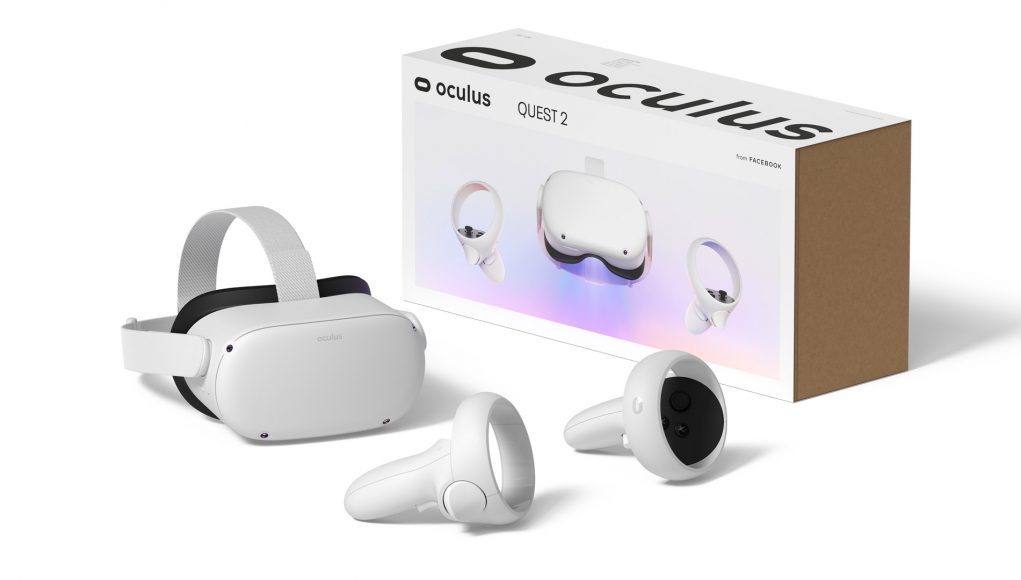Oculus Quest 2 has everything you need in the box to get playing an awesome selection of VR games. Once you’ve owned it for a few weeks though, you’ll probably start to notice the headset’s inherent pain points, which can be solved with a few key aftermarket products. Here, we’ve rounded up some of the best basic accessories you may want to consider as a long-term VR user.
Upgrade Your Headstrap
With onboard computing, sensors, and battery all located inside the Oculus Quest 2, the device is decidedly front-heavy. You may not notice right away, but the more you play, the more those niggling comfort issues will arise. Your neck will thank you in the long run by replacing the stock fabric headstrap with a rigid one.
Facebook’s official headstrap replacements, the Elite Strap or Elite Battery Strap, provide good counterbalance to better center the headset’s bulk closer to the middle of your head. The Elite Battery Strap seems to be the best when it comes to counterbalancing and it also provides around 2 -3 hours of extra playtime thanks to the 4,676 mAh battery integrated in the back.
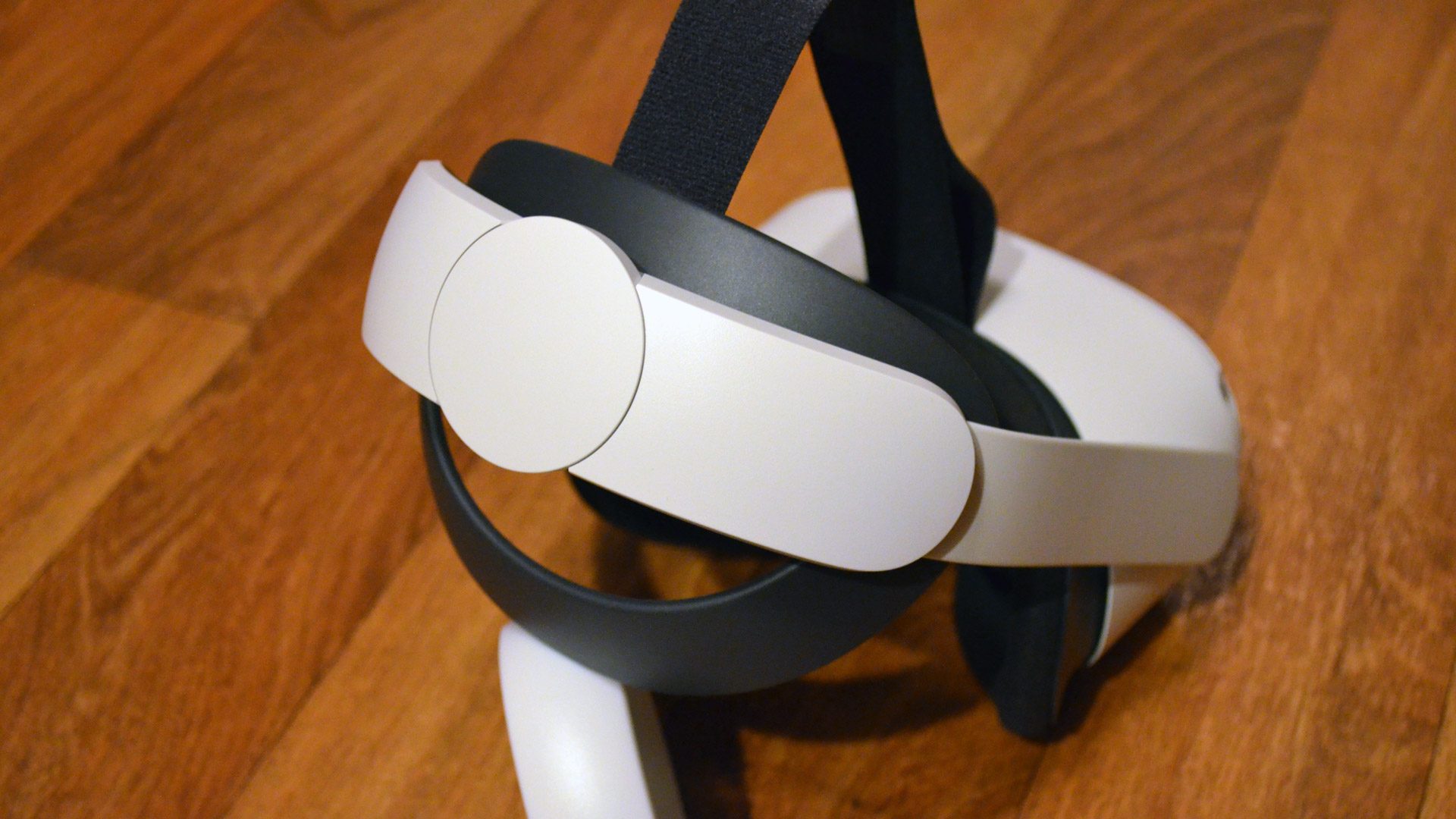
At $50 and $130 respectively (the Elite Battery Strap comes with a travel case) these are pricey, but effective solutions—provided you manage to get one that doesn’t eventually break. Quality has been an issue with these official straps in the past. Although Oculus has seemingly taken care of the issue by pulling affected items from sale, every once in a while support threads still pop up.
For around $30 – $40, you can get a a number of white label straps similar to the regular Elite Strap on Amazon that essentially do the same job. If you’re looking to save a couple bucks, many of them are well-rated by users. You can also get variants with external battery caddies on the back which provide more or less the same functionality as the Elite Battery Strap at a fraction of the price.
VR Cover or Spare Facepad
After playing VR games regularly over the next few months, you may start to notice grime and grease buildup on the face pad (also called ‘facial interface’) of your Quest 2. The stock face pad is basically a sponge, so to make headset sanitization simple, you should really invest in either a VR cover or a replacement pad that is easily cleanable.

There are thankfully a number of solutions on the market. VR Cover produces an official third-party facial interface replacement set for $30 which takes the place of the original. It comes with anti-fog airflow channels, removable nose guard and two wipeable PU leather-covered memory foam replacement pads.
VR Cover also makes a silicone cover for $14 that goes over the stock face pad. It offers a hand-washable medical-grade silicone construction and nose light guard too, which is handy. If you’re looking for a cheaper solution, for $9 you can buy a similar silicone cover on Amazon, although it’s unclear if the silicone used is the un-oiled variant seen in VR Cover’s version, which could cause skin irritation in users with sensitive skin. Whatever you buy, make sure it fits Quest 2 specifically since the headset has a unique face pad design.
Long USB-C Cables for Wired PC Play
Whether you’re just looking for comfortable charging during gameplay, or you want to connect Quest 2 to your computer via Oculus Link to use it as a PC VR headset, you probably want a cable long enough to get the job done.

Oculus has the official 16-foot Link cable for $80; it’s lightweight thanks to its fiber optic design, but that’s still a pretty steep price to pay for a cable. Thankfully, any 3.0 USB-C cable will work, and there are tons on Amazon that will do the job. Just pick one, and you’re off to the virtual races.
Oculus Link is the lowest latency way to play PC VR games with Quest, although it’s not the most comfortable way since you’ll be tethered to your PC. To cut those wires, you may need to modify some things about your wireless network setup that could let you play via Wi-Fi. Remember, to play PC VR games via Link, you’ll need a VR-ready PC.
Wi-Fi Router for Wirelessly PC VR Games
Cables are so 2020. With Oculus Air Link you can stream SteamVR and Rift exclusive games over Wi-Fi and play them wirelessly just like native Quest games.
If you don’t have a dual-band router and are still using that old 2.4GHz box, it might be time to upgrade, because Oculus recommends connecting to Wi-Fi via 5GHz band (AC or AX).
You can find dual-band Wi-Fi routers for as low as $40 on Amazon, however the more you pay, generally the better range you get. Oculus recommends having your PC connected to a router or access point via ethernet cable, and in the same room as the headset or in line of sight. The better the connection, the lower the latency involved.
Make Charging Easier
Ok, so you might have a nice and long charging cable now, but that may not be enough to stop you from forgetting to top up all of your batteries. There’s a few products out there that help you keep your headset and controllers charged at all times.
Anker offers a nifty Quest 2 Charging Dock for $87, which not only acts as a nice place to rest your headset and Touch controllers when not in use, but also makes sure they’re always at 100% battery when you’re ready to play. The only issue is it’s often out of stock, although there’s a few other things you can grab that can still make life a little easier.
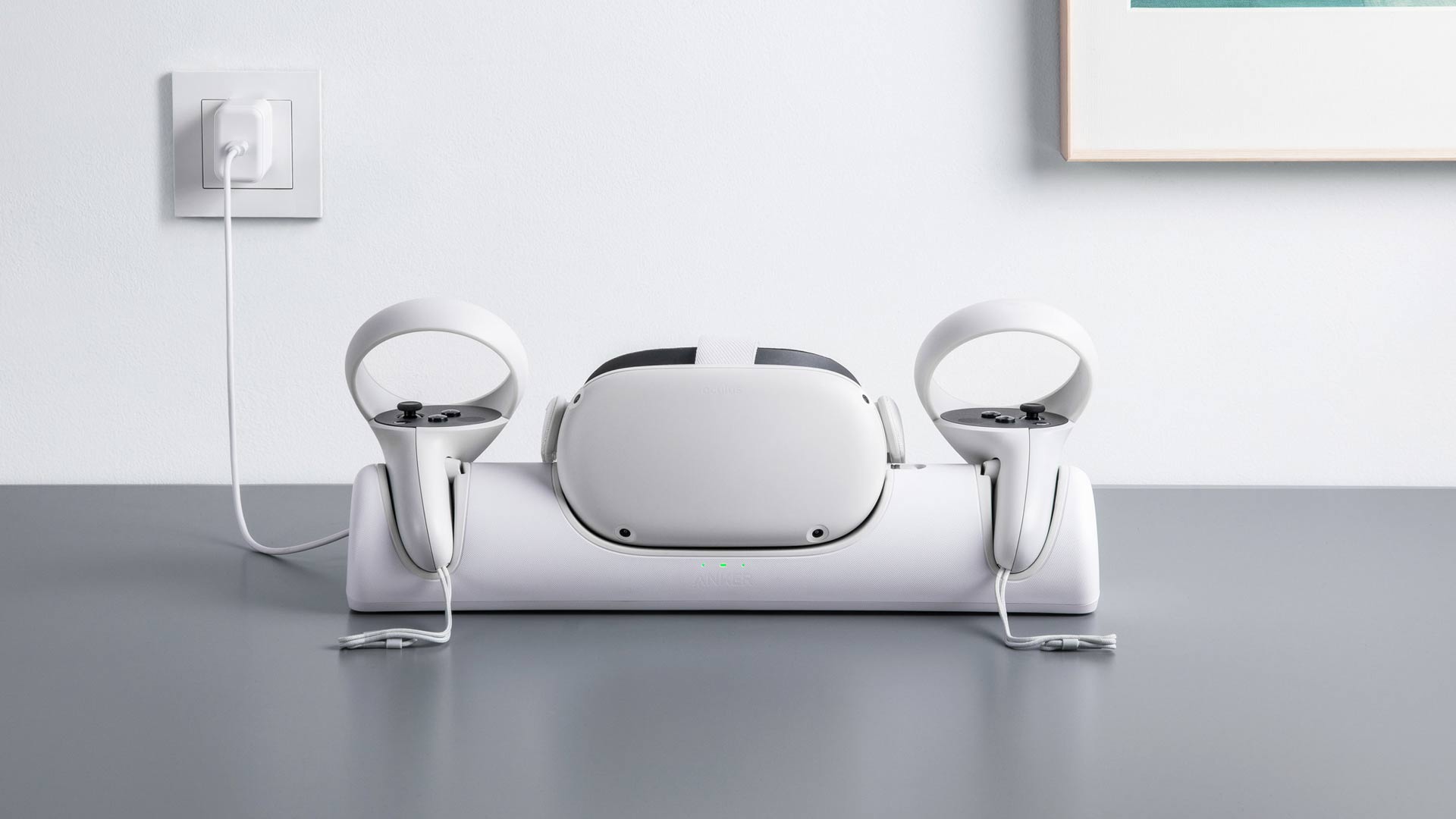
A quick and easy solution is a ready supply of rechargeable AA batteries and battery charger. You’ll find them everywhere, from your local supermarket, to IKEA, to Amazon. Many long-term VR users go for Panasonic’s name brand Eneloop batteries, which offer a low discharge rate when not in user and high rechargeability, but here’s an insider tip: the AmazonBasics and IKEA 2450 mAh Lada batteries are very similar for a much cheaper per-battery price. You’ll want plenty—at least four to make sure you always have a spare ready for when Quest throws you the dreaded low battery warning. Oculus suggests 1.5 V batteries, but your regular 1.2 V AAs work just fine.
On the topic of batteries, there are also USB-rechargable batteries from Survival Frog that have a USB connector integrated into the battery’s design. A four pack will cost you $15, and come at a lower 1450 mAh rating, but it certainly gets major points for reducing clutter.
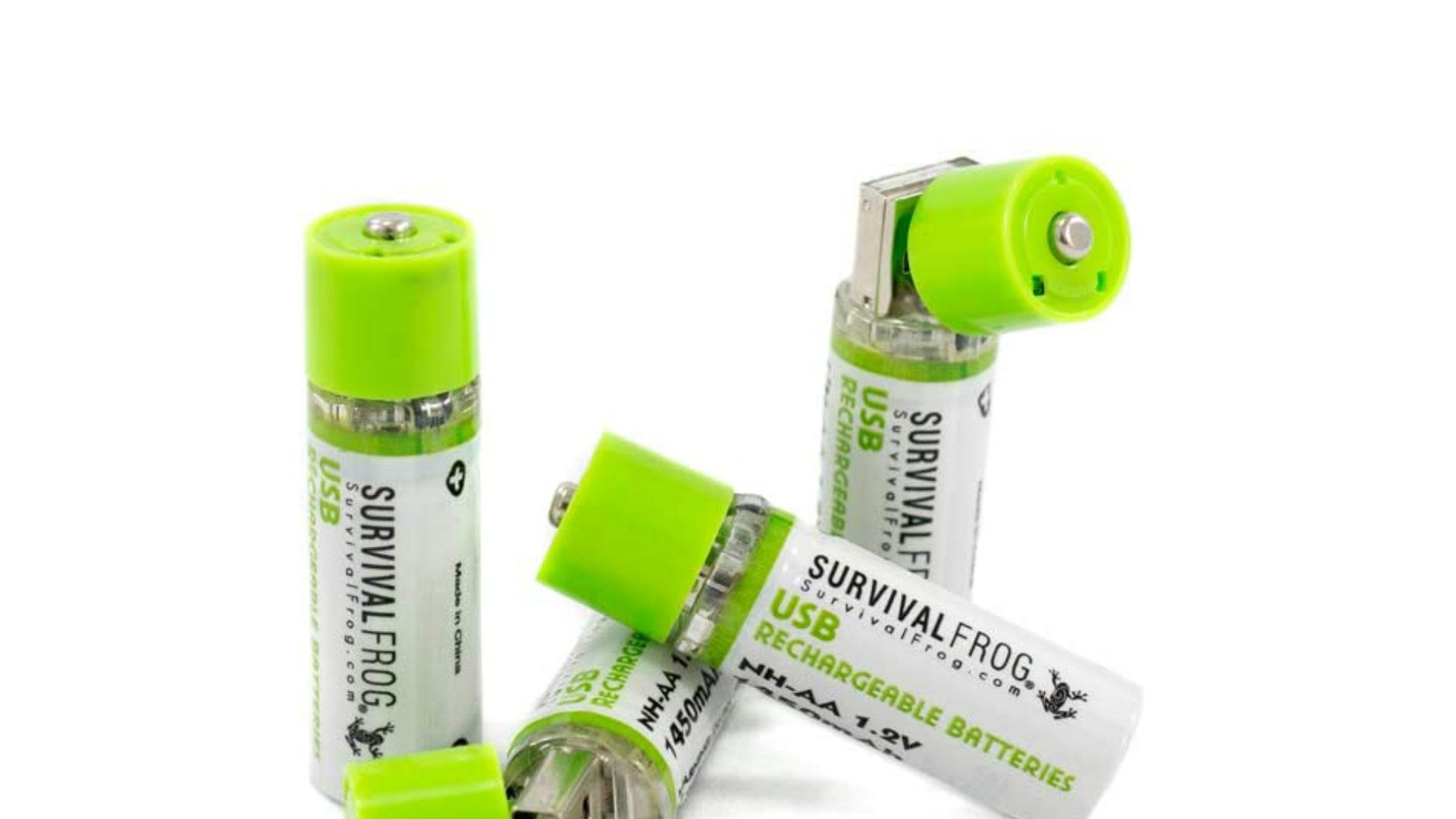
Headset charging can also be made simple too without buying Anker’s special dock. A set of USB-C magnetic cables on Amazon for as little as $13 will do the trick, although you can’t use it for Link gameplay, only charging.
Carrying Cases
Maybe you haven’t really needed to leave your house, but eventually you’ll want to take your Quest over to show off some of your favorite games and experiences to friends and family. Quest 2 is pretty rough and tumble, but you’ll still probably want to protect your investment from dings and scratches.
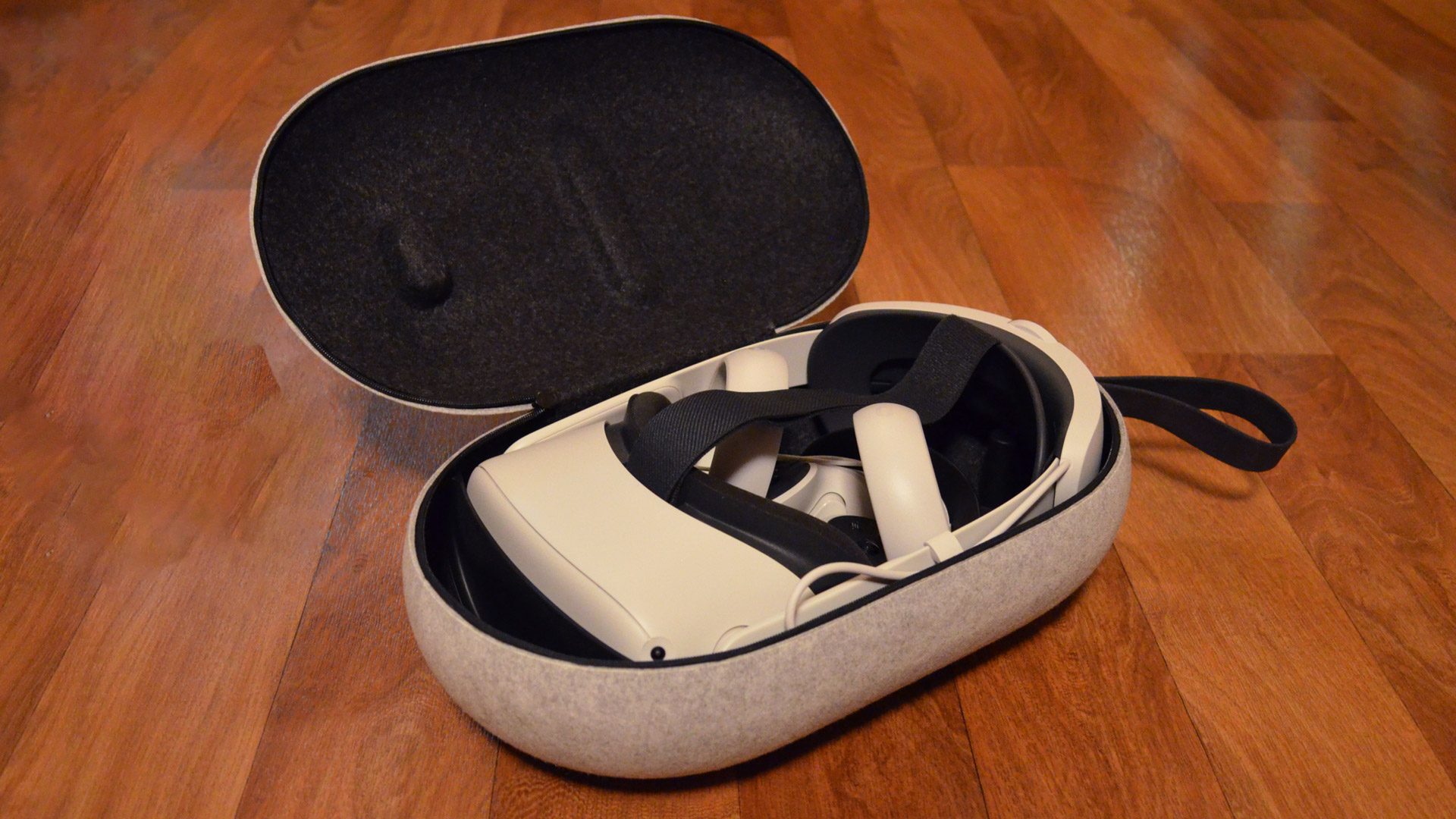
Oculus has a stylish, albeit fairly cheap-feeling Quest 2 carrying case for $50 which will get the job done. It can fit everything you need, including Touch controllers and Elite Straps. It’s nearly as thin as the headset itself, which makes it good for slipping into a backpack or carry-on.
That said, Oculus Quest 2 isn’t super unique in its form-factor, so you have plenty of cases to choose from to get the job done. Watch out though, if you bought a third-party head strap, you’ll need to double check there’s enough room in there to fit it, since the white label straps tend to be a bit bulkier than the official Elite Straps.
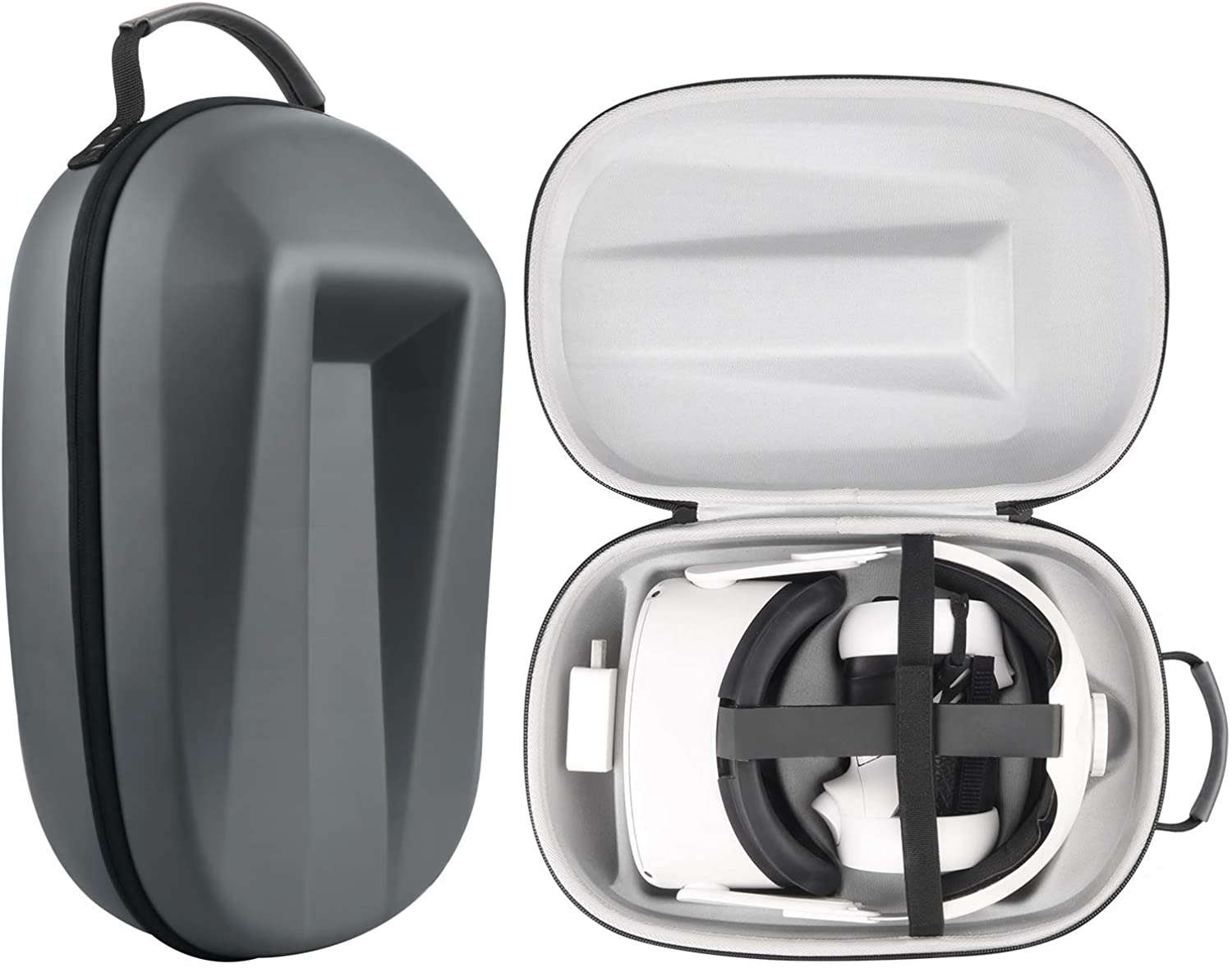
For $39, the Esimen Quest 2 case is a rigid case made from a high-density material that can fit everything. That includes the company’s bulkier third-party headstrap and many similar-looking white label straps.
Protect Your Glasses (and Lenses too)
Glasses wearers already have the plastic off-set included in the box, which puts a bit more room between the Quest 2’s lenses and your precision specs. This may work for a majority of users, but if you’re looking for some special kit, you’ve come to the right place.
Many long-term VR users and developers have opted for a separate pair of low-profile glasses entirely, so you can play in any VR headset, past, present or future. For as low as $30 (depending on your prescription), you can get a cheapish pair of glasses to suit your needs from Zenni Optical, prescription lenses included.
Frames Direct offers an official third-party solution for $80 for prescription inserts which include an anti-reflective coating. There are multiple vendors offering more or less the same thing though, with VR Optician offering theirs for $70. Whatever company you go with though, make sure to have a copy of your prescription since you can’t buy corrective lenses online in the United States without it.
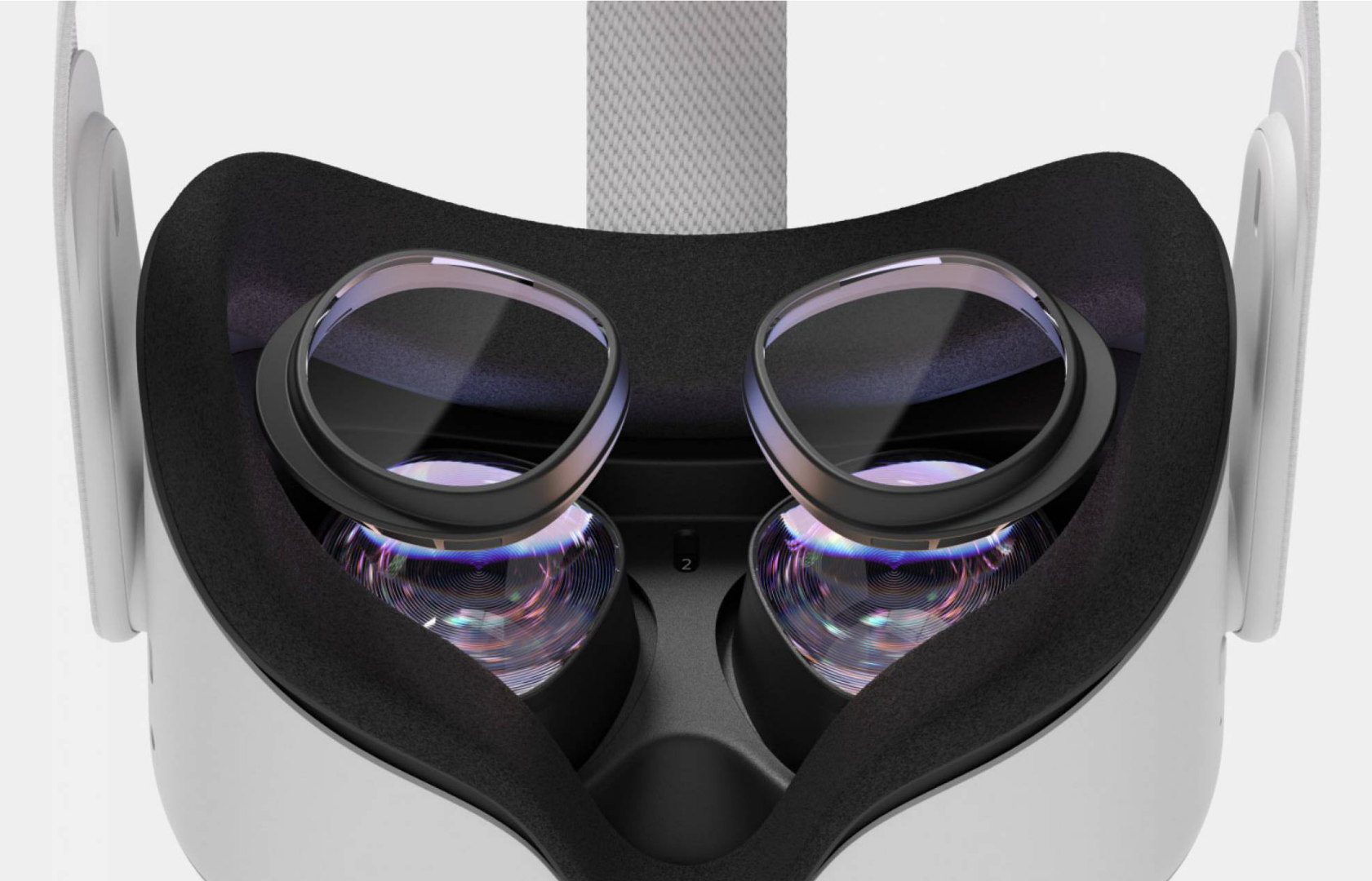
Still, you may be in for accidental scratches from your cheapy specs, which leads us to the an expensive, but awesome solution for the myopic among us. You can also buy special inserts that come in both prescription and non-prescription versions.
The same basic design can also be purchased without non-prescription inserts too from a number of companies, which not only protect from scratches but also in some cases blue light too. These are much cheaper, with pricing typically around $20 – $30 for a pair.
What is your favorite must-have Quest accessory? Let us know in the comments below!

